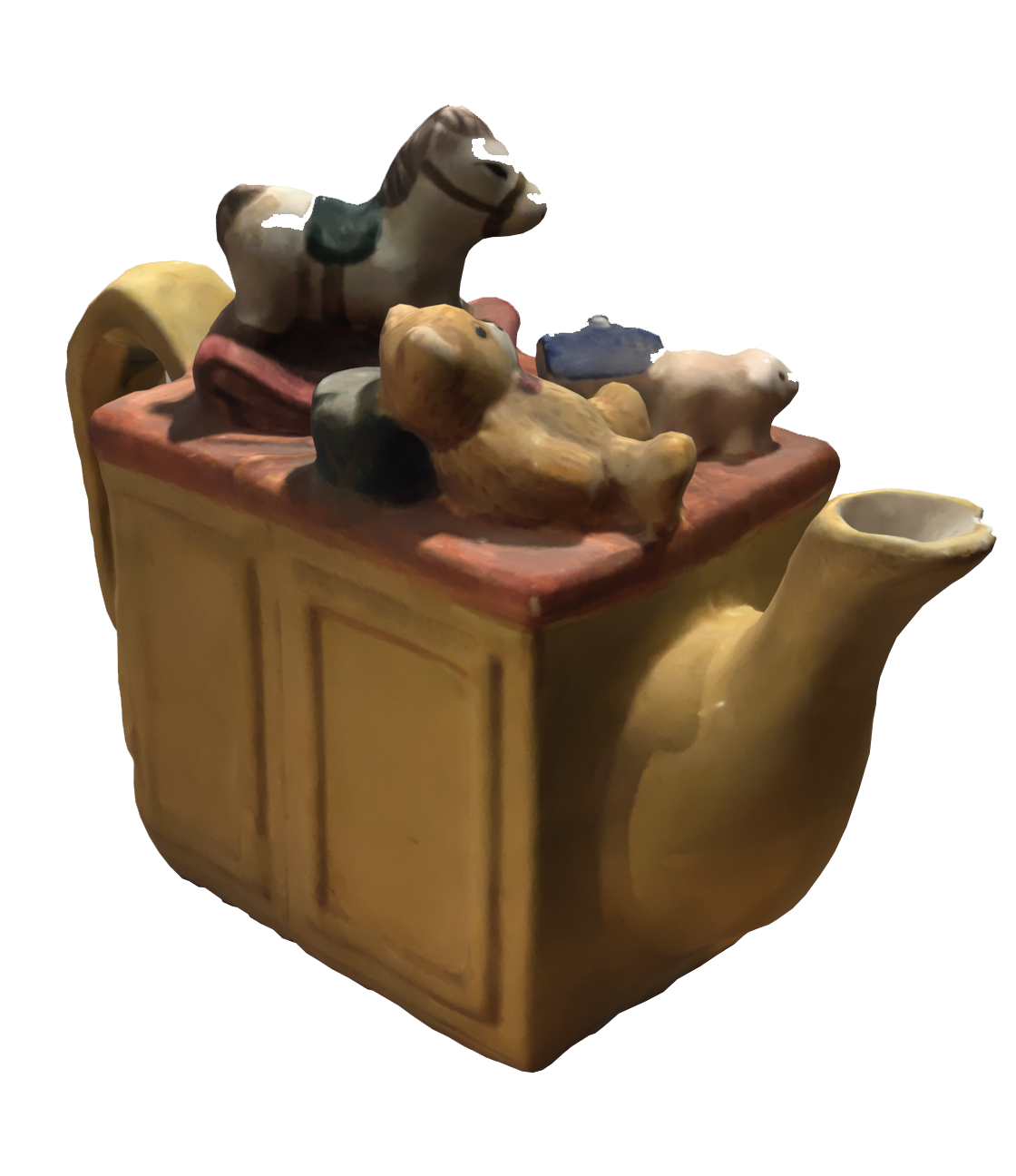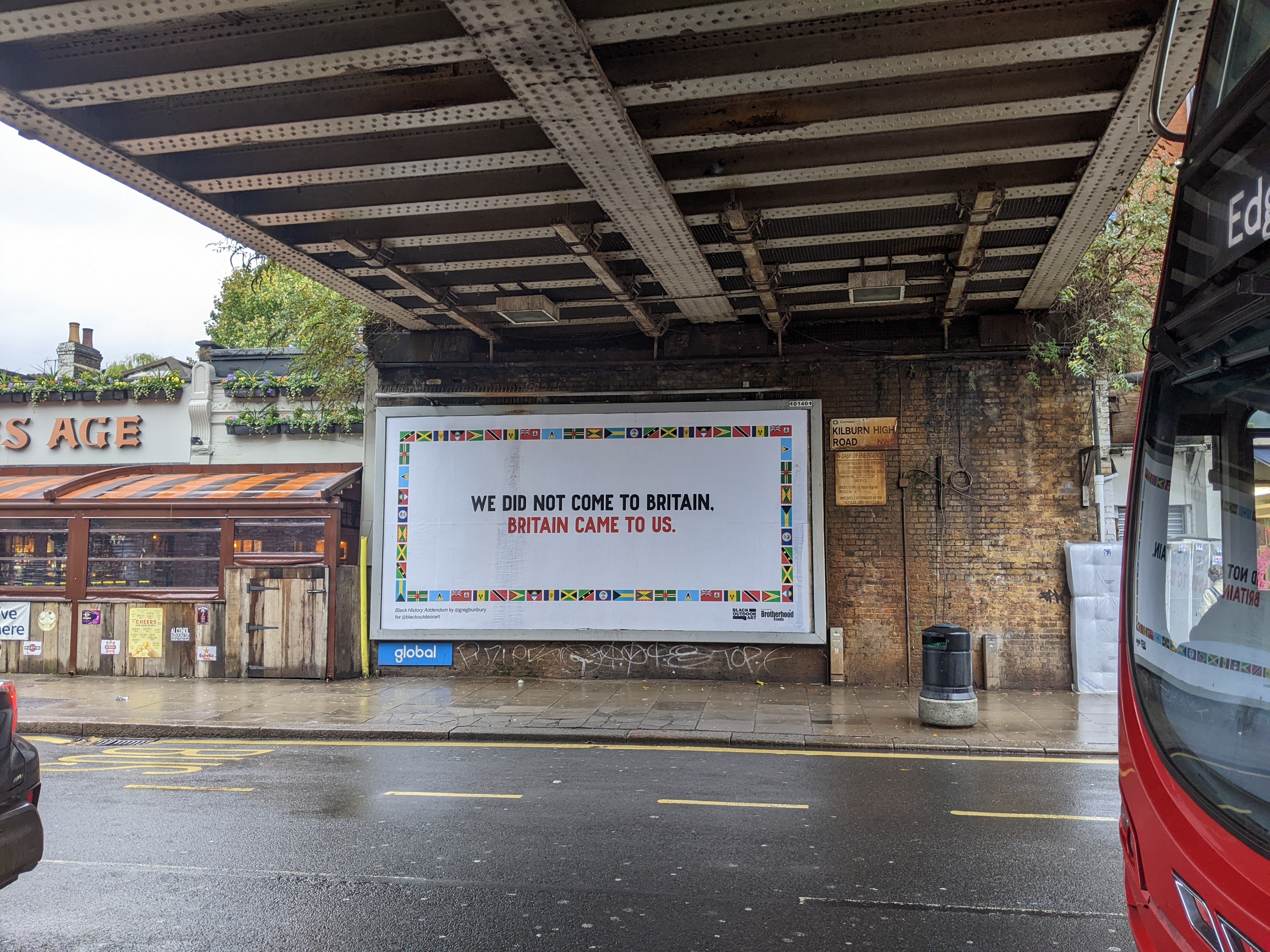Francesca Murialdo
Middlesex
University

A found object in my street, outside a neighbour’s house, reminded me of a collection of teapots at Rose’s Cafe when it was in Kingsgate Road, documented in the film Memories of Possibilities by Anna Bowman.
What is Kilburn?
Kilburn, situated in North- West London, is a patch of land spanning three boroughs, Camden, Brent and Westminster.
Kilburn has many different identities and voices: it was the heartland of London's Irish community, Kilburn High Road, known as the Music Mile, played a central role in London’s music scene, and the quality and quantity of its architectural heritage is the witness of an important past.
Kilburn is a welcoming neighbourhood that has evolved into a multicultural realm, where diverse identities intersect amidst a backdrop of constant change.
What gives a place its specificity is not a shared historical background but the network of social relationships and common experiences that build a sense of place.
There are many different communities in Kilburn – that’s what makes Kilburn such an interesting place, with an abundance of social engagement, associations, organisations, and groups developing projects to support the community in many ways. Thanks to its strategic position, coupled with a robust public transport network, Kilburn is a hypersensitive and fragile territory, susceptible to external pressures, rapid transformations, and the looming risk of gentrification.

© Francesca Murialdo
What is Kilburn Museum Lab?
The use of the word Museum is a provocation that challenges traditional notions of institutionalised spaces. The addition of Lab suggests that museums can be participated selfdetermined entities that prioritize what is valuable and meaningful to their respective communities. By documenting and celebrating the diverse narratives that shape our community, the Kilburn Museum Lab seeks to engage the community actively, fostering understanding and appreciation for our cultural, ethnic, and socioeconomic diversity, and sharing the myriads of hidden stories that contribute to shaping our collective sense of place. The Kilburn Museum is a cultural space with a strong community focus, dedicated to positively influencing Kilburn’s social fabric. It serves as an agent for change to empower collective ownership of cultural heritage and shape future outcomes.
The museum is a work in progress, devoid of a fixed plan or plot, evolving with the collective vision of its community.
The Kilburn Museum serves as a dynamic laboratory, employing innovative methods to actively involve and empower community members.
Every member of the community becomes a curator, a storyteller, and a guardian of Kilburn’s legacy, ensuring its preservation for present and future generations. The Museum is everywhere in Kilburn - while it may manifest physically the event at the Tin Tabernacle (on the 22nd of June 2024), its essence transcends physical boundaries, thriving on dynamic community interaction. It is fixed now on this catalogue but has also a virtual space (kilburnmuseumlab.org/) where objects, sounds and interviews are archived. The museum is a work in progress, devoid of a fixed plan or plot, evolving with the collective vision of its community. It is a rather heterogeneous collection of voices, each adding a distinct hue to the mosaic of Kilburn’s cultural identity.
The richness of Kilburn in terms of activities, relationships, and potential for the future emerged immediately in this initial project.
Its further development will build upon the emerging insights and, more significantly, to explore aspects not yet evident in this snapshot, particularly the presence of specific age groups and communities.
Francesca Murialdo is Director of Programmes in Interior Architecture and Design at Middlesex University in London. Architect, PhD in Interior Architecture and
Exhibition Design, she has practised and taught Interiors since 1998 at Politecnico di Milano, before moving to Middlesex University in 2015.
Francesca’s research and practice focus on the transformative potential of Interiors as a driver of social change and a catalyst for cultural activation.